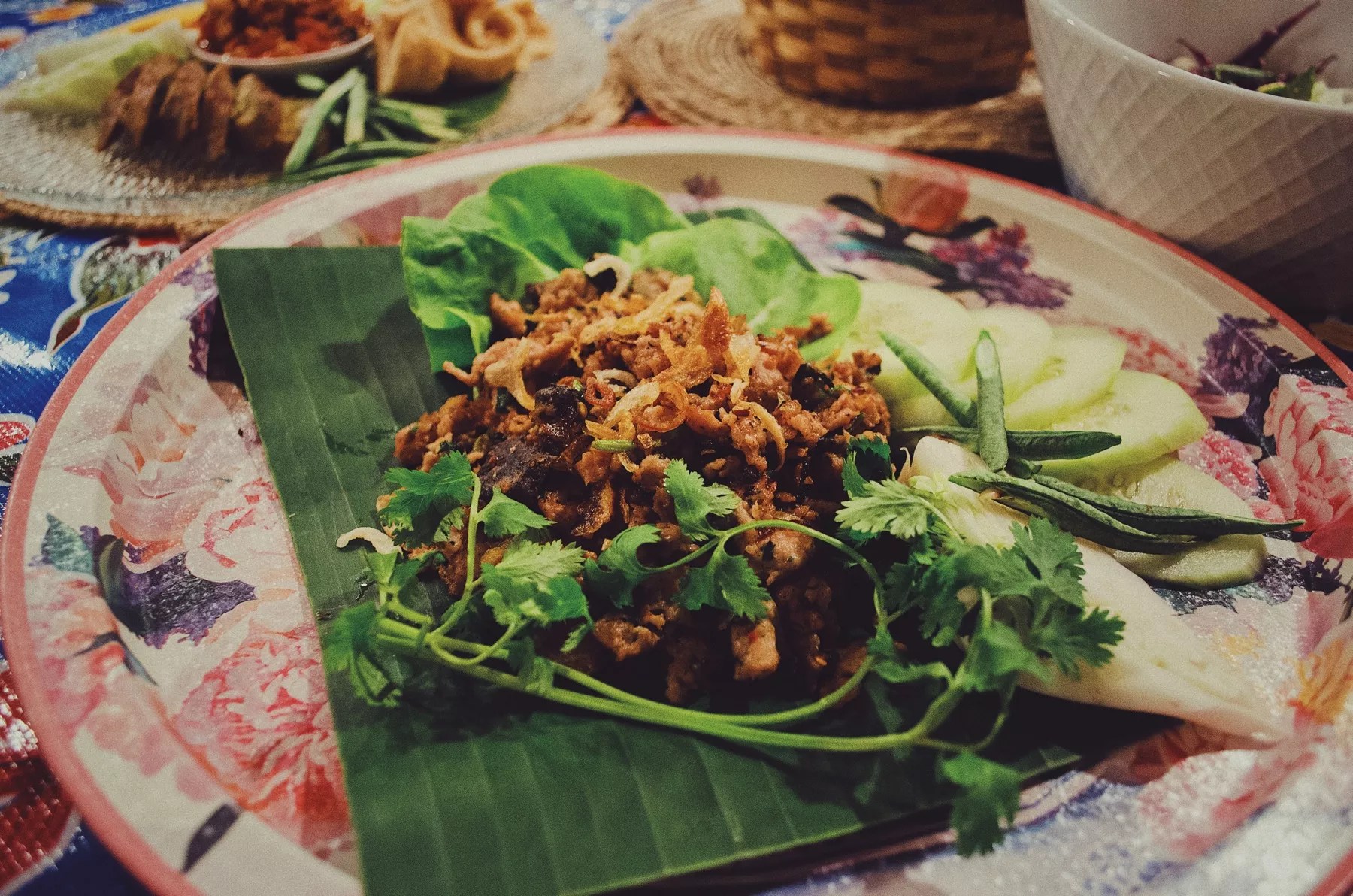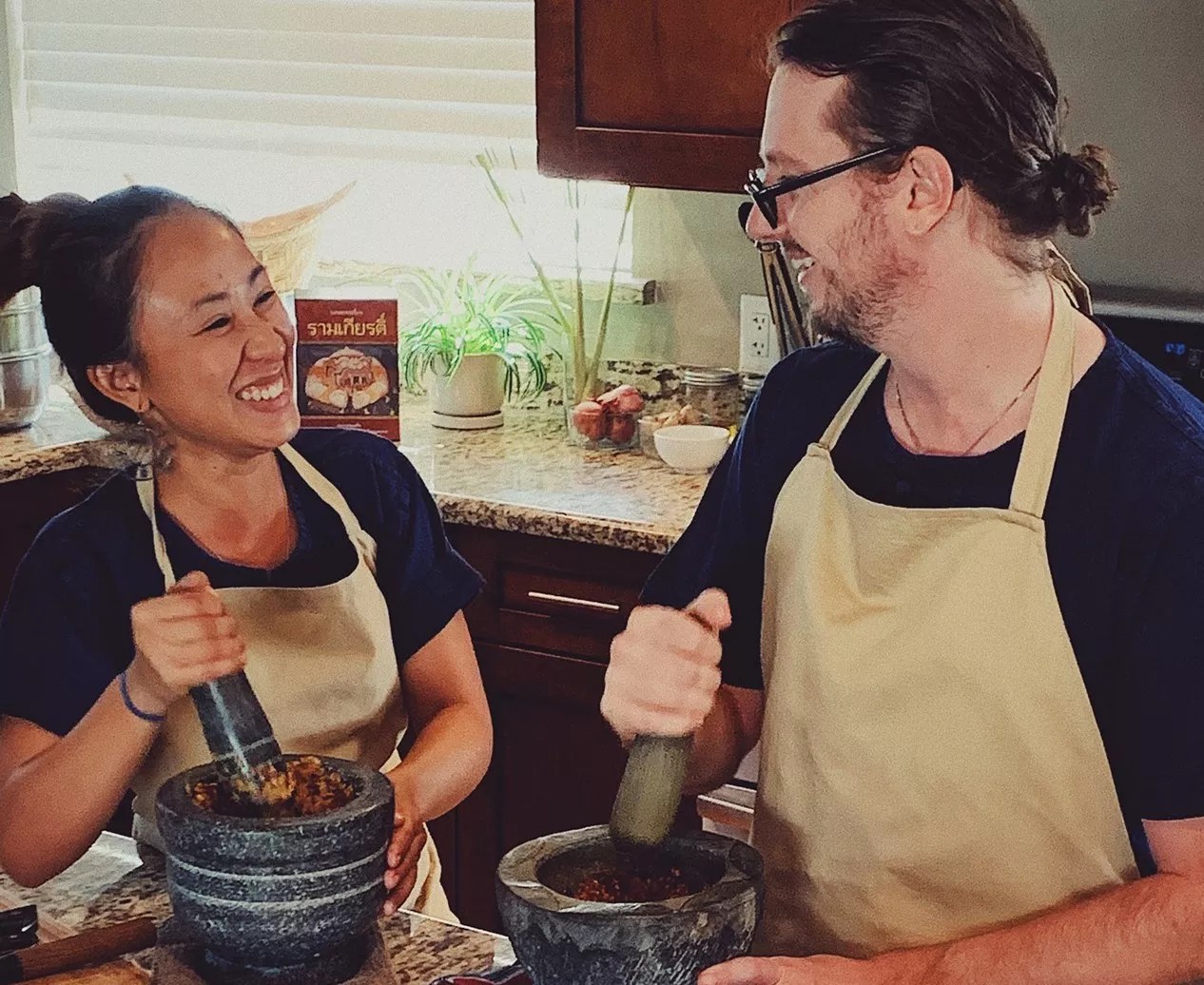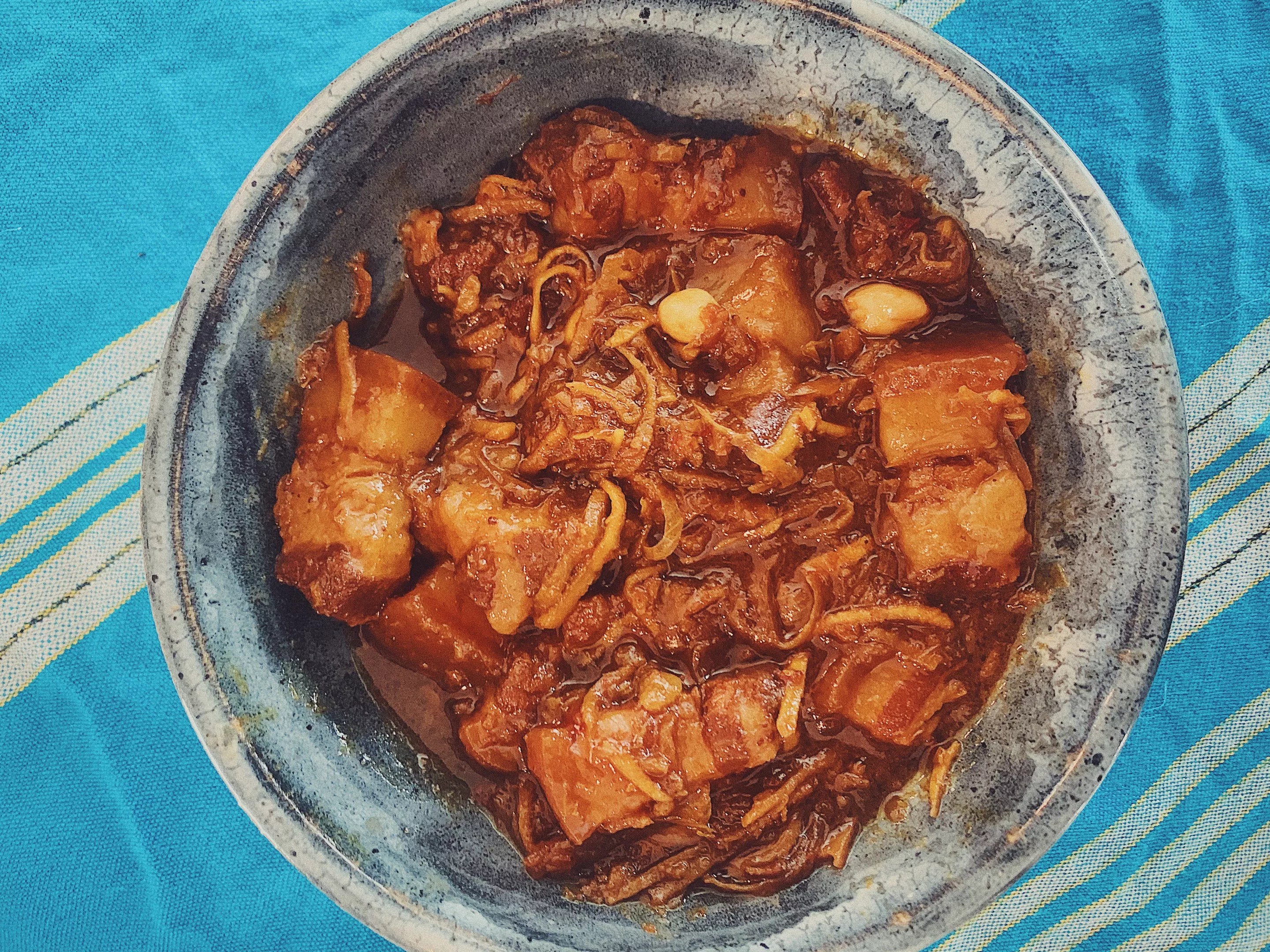
Lom Wong

Audio By Carbonatix
Each week since late October, husband-and-wife team Alex and Yotaka Martin have spent Wednesday through Friday cooking just a few meals available for Friday takeout. They aim, Alex says, to “show people another side of the cultures of Thailand and their cuisine.”
They’re succeeding. Their pop-up, Lom Wong, provides stunning glimpses of Thailand’s roads less traveled.
Lom Wong prepares micro-regional dishes, often specific to an individual person or village, and from people and villages across Thailand. If the Martins can make a paste or egg noodles from scratch, they do. They pound nam prik for hours. They coax milk from coconuts. They dry and fry pork cracklings. Alex says they make one typical ingredient, minced pork, using “a machete and swinging for a long time.”
When preparing food, the Martins channel the wisdom of Thai villagers, farmers, and the Moklen, a seafaring Indigenous Thai minority virtually unknown in the United States. (Lom Wong also raises money for the Moklen.)

Alex and Yotaka Martin run the pop-up Lom Wong.
Lom Wong
In its current form, the pop-up consists of three takeout courses for $50 (plus tip), food enough for two people. Volume is small. Access is limited. Each week’s menu, tightly themed and accompanied by an extensive backstory, is available through Lom Wong’s email sign up. Announcement emails drop Monday mornings, and the first few lucky subscribers who fire off replies can lock in orders for Friday evening takeout.
You’ll eat well at Long Wom, but you’re also bound to learn some. Before the pandemic, Lom Wong was an in-person pop-up dinner, one that I attended in late 2019. Before it was even that, it was an idea that began in Thailand. Yotaka grew up on five acres of farmland in the village of Baan Sanmaket in Chiang Rai, a province in Thailand’s far north. Her family raised pigs, chickens, and ducks. Her farm grew a rich bounty of produce, such as jackfruit, mangoes, and papayas.
Alex, a Chicagoland native fluent in Thai, lived in Thailand for 12 years. He and Yotaka met online in the city of Chiang Mai. Together, they have since taught courses through nonprofits like the Institute for Village Studies. One course, now on hiatus due to the pandemic, is called Indigenous Knowledge and Sustainability in Thailand.
The Martins take students far from cities and into their kitchens. Perennial stops include Baan Tahm Phratat, home to Alex’s (unrelated) “Thai grandmother,” Won Pen Khumwongsa, who cooks “central-western Thai food, more village stuff.” They also spend time in southern Thailand among the Moklen, who Alex says live on the coasts of Phuket, Ranong, Phang Nga. From the Moklen, Alex and Yotaka have learned esoteric culinary wisdom, like jungle herbs and methods of sustainable squid catching.
“They also taught us about using food to teach about a culture, and human rights,” Alex says.

Cooking with Won Pen, one of Lom Wong’s many inspirations.
Lom Wong
The Martins’ deep, rare knowledge animates Lom Wong. Its mission, “showing people another side of the cultures of Thailand and its cuisine,” was kindled through these trips, these grateful experiences. The Martins hope that the pop-up, the current phase of Lom Wong, is but one step on their transatlantic road to a sit-down restaurant. The pop-up, Alex says, is a way of “doing things sustainably and by building community.”
Head full of dreams, Yotaka cooked for a year at a restaurant in Thailand. After a move to the States and a stop in Washington, the Martins landed in Arizona. Yotaka cooked at Glai Baan for two stints, the latest ending in December 2019. Alex, who also cooks for Lom Wong, spent time behind the bar at Mowry & Cotton.
“We’re really just good students who are really good at sharing what we have learned from our teachers,” Alex says. “And that’s these local community members and local chefs who have literally a millennium of passed-down knowledge that they have honored us with, allowing us to stay with them a few weeks a year and learn.”
When eating Lom Wong, it helps to know this backstory. The pop-up is like an iceberg. Most of its mass is obscured, hidden below the surface, hinted at by the email descriptions and then by the steamed tilapia zipping with lime (ae gan neung boo wak now) or the tender squid (chu bai ka geu ti ba da) submerged in a thin russet coconut-rich curry. (Note: the dishes in this paragraph are Moklen; I use the Moklen names shared by Alex and Yotaka, as they do and hope to in their planned sit-down restaurant.)
To know the history, though, is to better trace the impressive below-surface depths – to more completely understand that Lom Wong is a wild unicorn of our local food scene.
Recently, I ordered Lom Wong three Fridays in a row. Each round featured different food from Thailand’s north.
The first round brought the soup tom som gai, jin toop (smashed beef), and a northern iteration of the minced-meat salad laap (laap Muang). This laap was without toasted rice and lime but with fried pork liver and cracklings. It was rich with the musk of the animal, loaded with crispy scallions, liver slices packing umami, and crunch. The tom som gai was, somehow, both pungent and gentle at once: big tender tomato wedges, lemongrass and cilantro and galangal woven in, more of a slowplay than a big splash.
Finally, the jin toop was deeply tender – like beef simmered for a long time, only the folds retained chew. A chile-spiked nam prik made with galangal and dried sparked a salty, grassy heat, burning low and steady. (Lom Wong never quite incinerates you.)

The Kaeng Hang Lay from Alex and Yotaka Martin
Lom Wong
This is food that vibrates with life. Glass noodles stuffed in tender-yet-meaty cucumber tunnels star in a delicate soup (tom jeut tangkwa yat sai mu sap wun sen). Kaeng Hang Lay, a tamarind-accented curry that the Martins say fuses Burmese and Northern Thai styles, was ornate, huge, and delicious – fragrant of lemongrass and delicately spiced, with lime and a galaxy of fragrant botanicals moving back and forth like the swirled inside of a marble, rich, rich, rich with pork belly and soulful leakings of its rendered fat. Easily one of the best things I ate in 2020.
Some Lom Wong dishes shout. Others whisper. Some fall between, like kaeng phet Charinda, Yotaka’s mother’s curry. For it, Yotaka and Alex hand-pound curry paste and hand-squeeze coconut milk, carefully introducing other ingredients like Thai eggplant and a scant measure of palm sugar. Sopping spoonfuls have a warming, deeply beefy spirit and a low echo of sweetness, the sugar just barely there, everything so subtle, all enough to uplift.
The flavors are bracing and vivid, even when reserved. A deep cooking-with-love travels from Thailand’s temples and village kitchens and seaside cook fires through Lom Wong’s cooks and food and to you. Each meal is a song of a faraway place, songs that, some certainly, you’ve never heard before.
Man, it feels great to hear them.
Lom Wong
Pickup point in Scottsdale available after email signup.
Three-course takeout for two $50